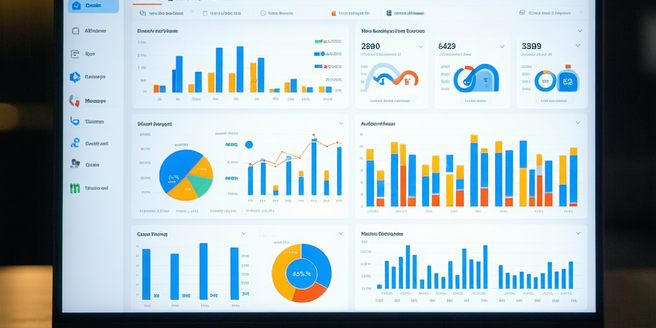Campaign Automation Tools

Understanding Campaign Automation
| Parameter | Description | Benefits |
| Task Automation | Streamlines repetitive tasks | Increases efficiency |
| Scheduling | Plan campaigns ahead | Saves time |
| Data Analysis | Generates insights | Improves decision making |
| Scalability | Handles large volumes | Supports growth |
| Customization | Tailors for specific needs | Enhances relevance |
| Integration | Syncs with existing tools | Streamlines operations |
Key Features in Automation
When exploring automation tools, prioritize features that streamline workflows, such as intuitive dashboards, customizable templates, and seamless integration capabilities. Look for analytics functions that provide actionable insights through comprehensive reporting systems. An AI-powered recommendation engine can add significant value by predicting trends and suggesting optimizations. It’s important to assess the tool’s scalability to meet future growth needs. Evaluate the cost-effectiveness of each tool in relation to the features offered. Ensure the tool offers reliable support and regular updates to cope with technological advancements. Additionally, check for mobile compatibility to accommodate on-the-go campaign monitoring and management. Ultimately, the right combination of these features can enhance productivity, efficiency, and the overall effectiveness of your marketing efforts.
Top Automation Tools to Consider
The market offers a plethora of automation tools: HubSpot, Marketo, and Mailchimp lead in popularity for their user-friendly interfaces and robust functionalities. HubSpot is renowned for its all-in-one sales and marketing platform, providing inbound marketing tools. One of its standout features is the seamless integration with various CRMs, enhancing user experience. Additionally, HubSpot offers a wealth of educational resources for users to optimize their marketing strategies. Marketo is essential for lead management and nurturing, with exceptional email marketing capabilities. Mailchimp stands out for its ease of use, making it perfect for small businesses venturing into automation. Evaluate each tool based on your specific needs and budget, and leverage free trials to understand how they can complement your strategy.
Integrating Tools with Systems
Successful integration of automation tools requires a strategic approach. Begin by mapping existing systems and evaluating compatibility with potential automation solutions. Leverage APIs for seamless data flow between platforms. Consider conducting a pilot test with a small team to evaluate effectiveness and gather feedback. It’s crucial to establish clear goals and objectives for your automation initiatives. Additionally, evaluate the cost implications and potential return on investment for implementing such tools. It’s vital to ensure that your team’s proficiency aligns with the tool’s complexity; training might be necessary. Collaborate with IT departments to address technical challenges and set up automation software without disrupting current operations. Regular monitoring and testing can identify integration issues, allowing for timely fixes and ensuring harmonized operation across all platforms.
Setting Up Campaigns Successfully
When setting up automation campaigns, begin by defining clear objectives and understanding your target audience thoroughly. Adopt a modular approach where campaigns can be easily adjusted or expanded. Utilize templates for efficiency but customize messages to maintain personalization. Consistency in messaging helps build trust with your audience. It’s important to remember that consistency across all communication channels strengthens brand recognition. It’s crucial to integrate advanced data analytics to enhance decision-making. Testing campaigns before full deployment allows for ironing out issues, such as audience segmentation and content relevance. Monitor performance metrics rigorously to refine strategies continually. Engage stakeholders in the process for feedback and collaborative improvements, ensuring a holistic approach to campaign success.
Measuring Campaign ROI
Measuring the ROI of your automated campaigns is critical to understanding their success. Start by setting KPIs aligned with business objectives, such as lead conversion rates, customer acquisition costs, or engagement scores. Ensure these KPIs are specific, measurable, and achievable. Use analytics tools built into automation platforms to track these metrics. To gain a comprehensive view, incorporate feedback from your sales and marketing teams. It’s also important to continuously optimize your strategies based on the insights you gather. Consider the time and resources saved by automation as part of your ROI calculation. Regularly compare data against benchmarks and historical performance to gauge effectiveness. An investment in campaign automation should ultimately lead to greater efficiency, higher revenues, and improved customer satisfaction.
Avoiding Common Mistakes
Common mistakes in campaign automation include over-relying on technology without human oversight, leading to impersonal communication and potential errors. This can be particularly damaging in industries where personal connection is key to customer satisfaction. It’s crucial to remember that automation should augment human efforts, not replace them entirely. Failing to segment your audience properly can result in irrelevant messaging that disengages recipients. Another pitfall is neglecting to update content regularly, which can make campaigns stale and less effective over time. Regularly refreshing and adapting content can re-engage your audience and maintain interest. Moreover, overlooking data privacy regulations could lead to compliance issues and damage your brand’s reputation. To avoid these mistakes, ensure ongoing human involvement, regular campaign audits, and a clear understanding of the regulatory environment.
Success Stories in Campaign Automation
Campaign automation has led many businesses to success. A leading e-commerce firm increased sales by 30% within three months of implementing a sophisticated email automation strategy, personalizing messages based on purchase history. This kind of precision in targeting audiences has become a game-changer in the digital marketing landscape. In addition, their customer feedback scores improved due to the relevance of these tailored communications. A startup in the tech sector significantly improved lead conversion through automated social media campaigns. Another example is a global travel agency that doubled its customer engagement rate by utilizing CRM-integrated marketing automation, allowing for timely, targeted campaigns. These success stories highlight the transformative potential of automation when applied effectively.
Future Trends in Technology
The future of campaign automation technology looks promising with advancements in artificial intelligence and machine learning. These innovations are expected to drive deeper personalization and predictive analytics, offering marketers unprecedented insights and control. The integration of automation with voice-activated and augmented reality platforms could redefine customer interactions. As these technologies advance, businesses may also discover new ways to enhance customer satisfaction. This could lead to the emergence of novel marketing strategies that were previously unimaginable. With these advancements, companies can anticipate the needs and preferences of their customers like never before. Privacy-focused solutions will likely gain prominence, providing more secure yet personalized campaigns. As businesses continue to prioritize customer experience, automation tools will play a pivotal role in delivering tailored, relevant communication efficiently and effectively.
Choosing the Right Tool
Selecting the right campaign automation tool requires a thorough understanding of your business needs. Start by evaluating the specific requirements of your marketing strategy, such as the need for email automation, lead management, or social media engagement. Consider the size and capability of your team; complex tools may require robust support and training. Moreover, research any potential integrations with tools you already use to streamline operations. Additionally, think about how the tool aligns with your long-term business objectives. Evaluate each tool’s scalability to ensure it can grow with your business. Cost is a significant factor, so balance the features offered against your budgetary constraints. Utilize free trials to assess usability and compatibility with your existing systems before making a decision.
